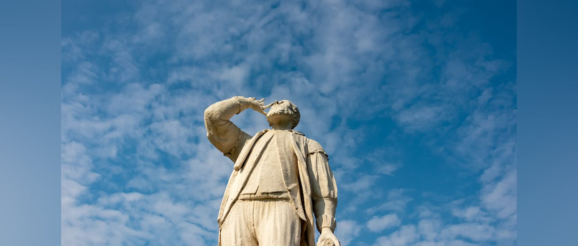What Does Your Galilean Telescope Show You? | Healthcare Innovation

In his 2019 book The Workshop and the World: What Ten Thinkers Can Teach Us About Science and Authority, Robert P. Crease, the chair of the Philosophy Department at Stony Brook University, and the author of several books on science, tries to answer the following questions: When does a scientific discovery become accepted fact? Why have scientific facts become easy to deny? And what can we do about it?
And one of the scientists whose stories he shares is the great Galileo Galilei (1564-1642), the Italian astronomer, physicist and engineer, born the first of six children to a lutenist and composer, in Pisa, then a part of the Duchy of Florence. Narrating a key moment in Galileo’s breakthrough, Crease writes that, “In 1609, a friend told Galileo about a Dutch lens grinder who had applied for a patent on a device to make distant objects seem closer. Intrigued, Galileo found he could make such a device himself, and set out to improve it. Thus began ‘the most intimate change in outlook which the human race had yet encountered,’ wrote the mathematician and philosopher Alfred Whitehead in 1925.’”
And, Crease writes, “The greatness began to stir when Galileo took the device, soon called a ‘telescope,’ outside into his garden and pointed it up.” As Crease writes, “It was not powerful, magnifying about eight times, roughly the power of a cheap set of opera glasses, but it showed the heavens to be startlingly different from how scholars had described them on the basis of observations made with the naked eye. Closer up, the Moon was full of craggy surfaces and mountains just like the Earth,” for example.
Crease writes that, “In March 1610, Galileo published Sidereus Nuncius, or ‘Starry Messenger,’ the first scientific work of astronomy based on telescopic observations.” Incredibly importantly, Crease writes, “Soon after he arrived in Florence, in 1610, Galileo discovered that the planet Venus had phases like those of the Moon, another key piece of evidence confirming the view that not only the Earth but all planets move about the Sun.” Galileo traveled to Rome to demonstrate his evidence, but, though initially there was no religious objection to his findings, Galileo ended up being investigated by the Roman Inquisition, as powerful forces in the Catholic Church found heliocentrism—the theory that the planets revolved around the Sun rather than the Sun revolving around the Earth—to be heretical. By 1615, the Roman Inquisition had convened against hm, and by 1633, had found him “vehemently suspect of heresy”—though he was never formally charged with heresy—and was forced to recant. According to popular legend, though, in recanting, he muttered the famous words, “Eppure si muove”—“And yet it moves.” Above all, it was Galileo’s deep curiosity and tenacious intellect that moved him—and the world—forward.
Fortunately, in 2022 in U.S. healthcare, no one is being persecuted by the Roman Inquisition. Yet in the world of radiology and imaging (see cover story, p. X), the future remains uncertain, with many patient care organization leaders trying to figure out just how they can strategize forward in order to ensure that they will have the radiologist coverage needed to move forward effectively in the future, even as the aging of the population will ensure growing demand for radiological services into the foreseeable future.
Nothing is certain in the swirling eddies of change in U.S. healthcare these days; but at least we’re all operating on the basis of a common rational understanding of the universe. Looking to the planets and stars, we can clearly see of our Earth that, yes, “si muove.”
